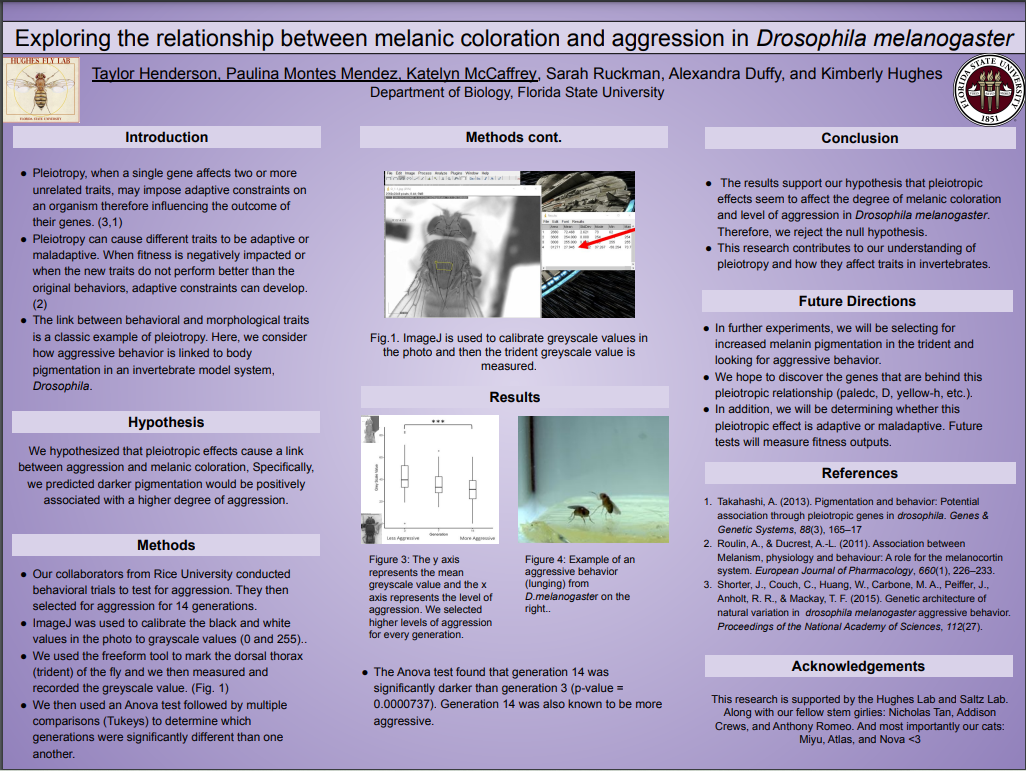Research Symposium
23rd annual Undergraduate Research Symposium, April 6, 2023
Paulina Montes Mendez Poster Session 3: 2:45 pm - 3:45 pm/ Poster #156

BIO
Science has always been interesting for me. I was born in Mexico, but immigrated to Florida at the age of 2. Once I started going to school and learning a new language I realized that science was fascinating to me. Although I wasn't involved in many science fairs or conventions growing up, I tried my best to learn what parts of science I loved most with my classes. I developed many meaningful relationships with my mentors and they paved the way for who I have become and showed me how I could expand on my love for the scientific field.
Exploring the Relationship Between Melanic Coloration and Aggression in Drosophila Melanogaster
Authors: Paulina Montes Mendez, Sarah RuckmanStudent Major: Biology
Mentor: Sarah Ruckman
Mentor's Department: Biological Mentor's College: Florida State University Co-Presenters: Katelyn Mccaffrey, Taylor Henderson
Abstract
Adaptive constraints, limitations that influence the outcome of genes, have important connections with the evolution of organisms as well as inheritance of complex traits. Pleiotropic effects are a classic example of an adaptive constraint. Pleiotropy occurs when one gene affects two or more unrelated traits. Here, we looked at melanic coloration and aggressive behavior in Drosophila melanogaster. Melanin production is thought to have an inhibitory effect on the neurotransmitter, dopamine, which can influence aggressiveness. Therefore, we hypothesized that pleiotropic effects cause a correlation between these two traits. Specifically, we predicted darker pigmentation would be positively associated with a higher degree of aggression. To test this, we quantified aggressive behaviors (fencing, boxing, and lunging) and artificially selected for high aggression, low aggression, and no selection (control) for 14 generations. We then measured the pigment of the dorsal thorax (trident) using ImageJ. Thus far, we found that generation 14, which was a more aggressive generation, was significantly darker than generation 3 when using an ANOVA. These results demonstrate a clear relationship between the level of aggression and melanin in D. melanogaster and provides some support for our hypothesis that pleiotropic effects are working on the two traits. However, more research is necessary to substantiate this, tests for the reverse effects, and to discover the genes that are behind this pleiotropic relationship.
Keywords: Drosophila Melanogaster, Aggression,behavior


